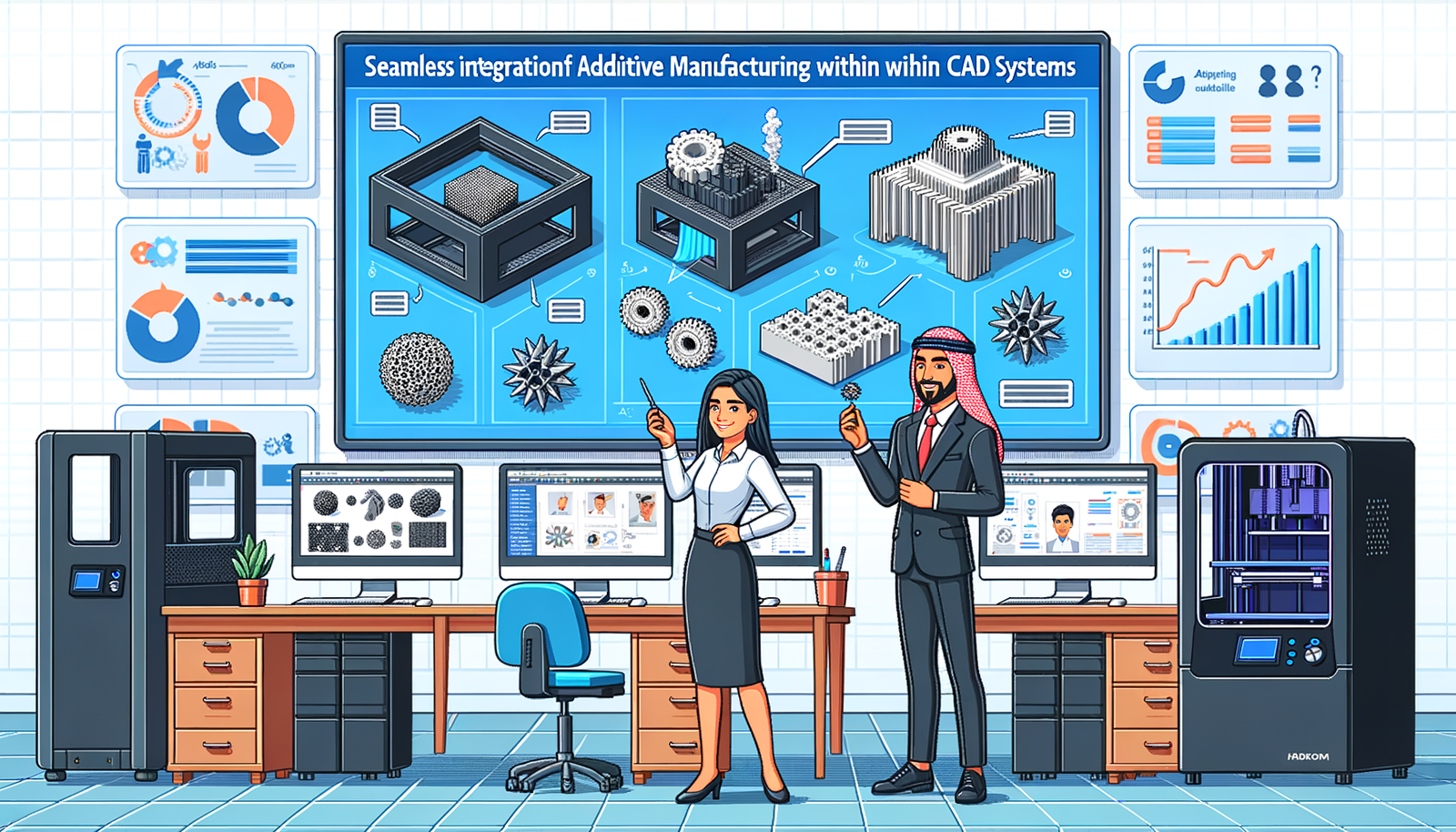Your Cart is Empty
Customer Testimonials
-
"Great customer service. The folks at Novedge were super helpful in navigating a somewhat complicated order including software upgrades and serial numbers in various stages of inactivity. They were friendly and helpful throughout the process.."
Ruben Ruckmark
"Quick & very helpful. We have been using Novedge for years and are very happy with their quick service when we need to make a purchase and excellent support resolving any issues."
Will Woodson
"Scott is the best. He reminds me about subscriptions dates, guides me in the correct direction for updates. He always responds promptly to me. He is literally the reason I continue to work with Novedge and will do so in the future."
Edward Mchugh
"Calvin Lok is “the man”. After my purchase of Sketchup 2021, he called me and provided step-by-step instructions to ease me through difficulties I was having with the setup of my new software."
Mike Borzage
Empowering Design Through Visual Programming Languages: Bridging Complexity and Creativity
October 23, 2024 8 min read


In the rapidly evolving landscape of technology and design, Visual Programming Languages (VPLs) have emerged as pivotal tools that bridge the gap between complex programming concepts and user-friendly interfaces. By enabling individuals to program using visual elements rather than text-based code, VPLs have transformed the way designers, architects, and engineers conceptualize and implement their ideas. This shift not only democratizes access to powerful design software but also accelerates innovation by allowing a broader audience to engage with computational design processes.
Definition and Purpose of Visual Programming Languages
At their core, Visual Programming Languages are programming environments that allow users to create programs by manipulating graphical elements rather than writing code in text form. By using visual representations such as blocks, nodes, and connections, VPLs abstract the syntactical complexities of traditional programming languages. This graphical approach focuses on the logical flow of processes, making it more intuitive for individuals who may not have a background in coding.
The primary purpose of VPLs is to make programming accessible to non-coders by simplifying the creation of algorithms and computational procedures. They serve as an entry point for designers and other professionals to leverage computational power without the steep learning curve associated with traditional programming. By abstracting code into visual components, VPLs enable users to focus on problem-solving and creativity, facilitating innovation across various fields.
Historical Context: Evolution from Traditional Programming to VPLs
The evolution of programming languages has been shaped by the pursuit of greater accessibility and efficiency. Traditional programming requires proficiency in syntax and detailed knowledge of language-specific constructs, which can be a barrier for many. The inception of VPLs can be traced back to the need for more intuitive programming paradigms that cater to visual thinkers and non-technical users.
Early examples of visual programming emerged in the form of flowchart-based systems and educational tools designed to teach programming concepts without overwhelming learners with code. Over time, advancements in graphical user interfaces and computing power led to more sophisticated VPLs capable of handling complex tasks. This evolution reflects a broader trend toward making technology more user-centric, breaking down barriers to entry, and empowering a diverse range of users to participate in software development and design processes.
Importance of VPLs in Making Design Software Accessible to Non-Coders
The accessibility of design software has been significantly enhanced by the introduction of VPLs. For professionals in fields like architecture, engineering, and product design, the ability to implement computational techniques without coding opens up new possibilities. VPLs remove the intimidation factor associated with learning programming languages, allowing designers to explore parametric and generative design methodologies seamlessly.
By providing a visual interface to complex algorithms, VPLs enable non-coders to automate tasks, optimize designs, and experiment with computational models. This democratization of technology fosters greater innovation as more individuals can contribute ideas and solutions without the traditional barriers imposed by coding expertise. The result is a more inclusive design ecosystem where creativity and technical capability are accessible to a broader audience.
User-Friendly Interfaces: Drag-and-Drop Elements and Flowcharts
One of the defining features of Visual Programming Languages is their user-friendly interfaces, which often utilize drag-and-drop elements and flowchart-like structures to represent programming logic. This approach allows users to construct programs by visually assembling components, akin to building with blocks. Each block or node represents a function, variable, or control structure, and they can be connected to define the flow of data and operations.
This graphical method simplifies the programming process by abstracting complex syntax and emphasizing logical relationships. Users can focus on the conceptual design rather than worrying about typographical errors or language-specific rules. The visual layout also makes it easier to understand and debug programs, as the flow of information is depicted clearly. This interface design is particularly beneficial for collaborative environments, where visual representations can be more easily communicated and understood among team members.
Immediate Visual Feedback for Design Iterations
An important advantage of VPLs is the provision of immediate visual feedback during the development process. As users modify their visual code, the results are often reflected instantaneously in the design output. This real-time interaction is crucial for iterative design, enabling rapid experimentation and refinement of ideas. Designers can adjust parameters and see the effects without the need for lengthy compilation or testing phases.
This immediate feedback loop accelerates the design process by reducing the time between conceptualization and realization. It encourages a more exploratory approach, where designers can test numerous variations quickly. The ability to visualize changes in real-time also aids in identifying and correcting errors promptly, leading to higher quality outcomes and more efficient workflows.
Examples of Popular VPLs in Design Software
Several Visual Programming Languages have become integral to design software, offering robust platforms for computational design. Grasshopper for Rhino is a prominent example, serving as a visual scripting tool within the Rhino 3D modeling environment. Grasshopper allows users to create complex geometric forms and parametric designs by connecting components that represent mathematical functions and modeling operations.
Node-RED is another widely used VPL, particularly in the context of IoT and hardware integrations. It enables users to wire together devices, APIs, and online services using a browser-based editor. By representing data flows and interactions visually, Node-RED simplifies the development of complex systems and automations.
These tools exemplify how VPLs enhance design capabilities by:
- Providing accessible platforms for advanced computational design techniques.
- Facilitating integrations between software, hardware, and web services.
- Enabling users to create custom functionalities without extensive programming knowledge.
Advantages in Education and Rapid Prototyping
In educational settings, VPLs serve as invaluable tools for teaching programming and design principles. Their visual nature makes abstract concepts more tangible, helping learners to grasp foundational ideas without being hindered by syntax. This accessibility encourages more students to engage with technology and develop problem-solving skills critical in the modern digital landscape.
For rapid prototyping, VPLs offer the ability to quickly assemble and test ideas. Designers and engineers can create functional prototypes without in-depth programming, allowing for swift iterations and refinements. This agility is crucial in industries where speed to market and adaptability are competitive advantages. By reducing development time and lowering technical barriers, VPLs accelerate innovation and product development cycles.
Architectural Design: Generative Design Through Visual Programming
Visual Programming Languages have revolutionized architectural design by enabling generative design processes. Architects can use VPLs like Grasshopper to define parametric relationships and rules that generate complex structures and forms. By manipulating parameters such as dimensions, angles, and materials, designers can explore a vast array of design options that would be impractical to model manually.
This approach facilitates a deeper exploration of design possibilities, allowing architects to optimize for factors like sustainability, aesthetics, and structural integrity. The ability to iterate rapidly and visualize the impact of changes empowers architects to push the boundaries of conventional design, resulting in more innovative and efficient structures. Generative design through VPLs also supports collaboration with engineers and other stakeholders by providing clear visual representations of design logic.
Product Design: Automating Repetitive Tasks and Enhancing Creativity
In product design, VPLs streamline workflows by automating repetitive tasks and enabling designers to focus on creative aspects. By creating visual scripts that handle routine operations, such as pattern generation or component alignment, designers can reduce manual effort and minimize errors. This efficiency enhances productivity and allows for more time to be devoted to innovation and refinement.
Moreover, VPLs facilitate experimentation with complex geometries and customizations that are difficult to achieve with traditional tools. Designers can quickly test different configurations and variations, fostering a more dynamic and responsive design process. The ease of adjusting parameters visually supports the development of personalized products and tailored solutions that meet specific client needs or market demands.
Game Development: Real-Time Interaction and Visual Scripting
In the realm of game development, Visual Programming Languages enable developers to create interactive gameplay mechanics through visual scripting. Tools such as Unreal Engine's Blueprint system allow for the implementation of game logic, animations, and AI behaviors without writing code. By connecting visual nodes that represent actions and conditions, developers can construct complex systems efficiently.
This visual approach enhances collaboration between programmers, designers, and artists, as it provides a common language that bridges technical and creative disciplines. Real-time interaction facilitated by VPLs accelerates the prototyping of gameplay elements, enabling immediate testing and refinement. This leads to higher quality games and a more engaging player experience due to the iterative improvement of game mechanics.
Challenges and Limitations of Visual Programming Languages
Despite their benefits, Visual Programming Languages have certain challenges and limitations. One significant issue is their potential limitations in complex programming logic. While VPLs excel at simplifying straightforward tasks, they may become cumbersome when dealing with intricate algorithms or large-scale systems. The visual representation can become cluttered, making it difficult to navigate and manage the program effectively.
Another concern is the efficiency of the generated code. VPLs may not optimize performance to the same degree as hand-written code, potentially leading to less efficient applications. This can be a critical factor in scenarios where performance is paramount. Additionally, some VPLs may have limited functionality compared to traditional programming languages, restricting the scope of what can be achieved within the visual environment.
Scalability Issues Compared to Traditional Coding
Scalability is a notable challenge for VPLs when compared to traditional coding. As projects grow, the visual representations can become increasingly complex and difficult to manage. Unlike text-based code, which can be organized into modules and uses syntax highlighting and other tools to aid readability, visual code can become unwieldy with too many nodes and connections.
This complexity can hinder collaboration among teams, as the visual diagrams may not be easily shared or version-controlled using traditional development tools. Maintaining and updating large visual programs can require significant effort, potentially offsetting the initial time savings. Consequently, for large-scale projects, traditional coding may offer better scalability and maintainability.
Integration with Other Design Tools and Programming Languages
Integrating VPLs with other design tools and programming languages can present challenges. While some VPLs are designed to work seamlessly within specific software ecosystems, others may have limited compatibility. This can restrict the ability to extend functionality or integrate with external systems and data sources.
Furthermore, translating visual programs to text-based code for interoperability can be complex or unsupported. This limitation can impede collaboration with developers who prefer or require traditional coding languages. It may also affect the ability to implement certain advanced features or optimizations that are not accessible through the visual interface.
The Learning Curve for Seasoned Programmers Transitioning to VPLs
For seasoned programmers accustomed to text-based coding, transitioning to VPLs can present a learning curve. The shift from writing code to manipulating visual elements requires a different mindset and may initially slow down productivity. Programmers may find the lack of fine-grained control over code and the abstraction of lower-level details to be limiting.
Moreover, complex logic that is straightforward to implement in code might be more challenging to represent visually. Experienced coders may also miss the efficiency of typing code and using familiar development tools and shortcuts. Thus, while VPLs lower the barrier to entry for non-coders, they may not always align with the preferences and workflows of professional programmers.
Conclusion
Visual Programming Languages have played a transformative role in democratizing design software, making powerful computational tools accessible to a wider audience. By abstracting complex coding concepts into intuitive visual elements, VPLs empower designers, architects, and engineers to innovate without traditional programming barriers. Their impact is evident across various fields, from architectural generative design to product development and game creation.
Looking ahead, the integration of VPLs in design applications is poised to grow, driven by advancements in technology and a continued emphasis on accessibility. As VPLs evolve, they are likely to address current limitations, offering improved scalability, performance, and integration capabilities. This progression will further enhance their utility and adoption in professional settings.
For designers and professionals seeking to expand their skillset, exploring visual programming represents a valuable opportunity. Embracing VPLs can lead to new avenues of creativity and efficiency, unlocking the potential to produce more innovative and impactful work. By combining the strengths of visual programming with their domain expertise, individuals can contribute to the advancement of their fields and the broader design landscape.
Also in Design News

Seamless Integration of Additive Manufacturing Within CAD Systems: Enhancing Design Flexibility and Workflow Efficiency
November 24, 2024 8 min read
Read More
Design Software History: Bi-directional Associativity: Revolutionizing CAD with Seamless Synchronization and Parametric Modeling
November 24, 2024 4 min read
Read More
ZBrush Tip: Enhance Your Sculpting with Advanced ZBrush Brush Customization Techniques
November 23, 2024 2 min read
Read MoreSubscribe
Sign up to get the latest on sales, new releases and more …


